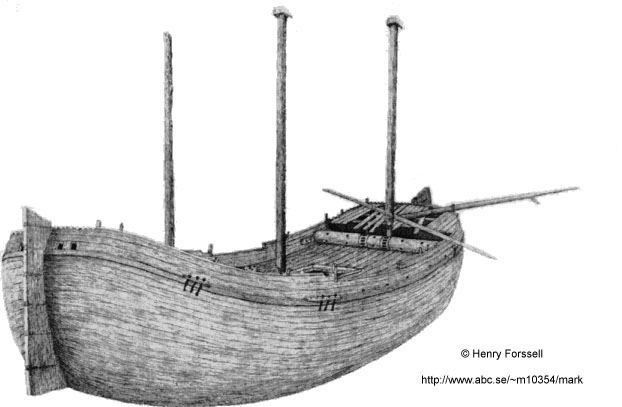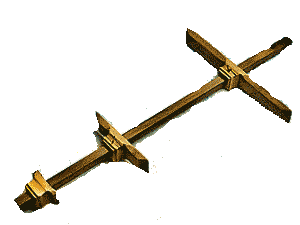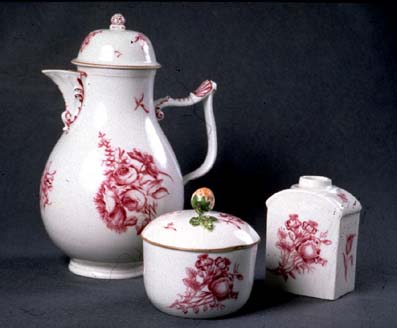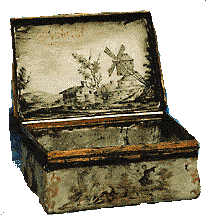St Michael
This is the story of a Russian merchant ship, a carvel-built three-masted galliot, 25 m
long.

present condition in situ
In the autumn of 1747 she was under the command of captain Carl Poulsen Amiel, sailing
from Amsterdam to St Petersburg with luxury goods. Unfortunately the Finnish winter was very early this
year. She probably sank off the coast in snowy or icy weather and probably nobody survived. There is
actually a note in the local Finnish county register of a shipwreck in this area. Besides that, the St
Michael was forgotten for 200 years.
In 1953, a fishing net got stuck in the waters off Borstö Island, Finland. When this was reported to
the Navy, a diver was sent down and a very well preserved wreck was discovered at a depth of 42 m. All
three masts were still standing up.
 For
many years the ship was known simply as the Borstö wreck. Finally, after extensive archival research,
it was identified by historian Christian Ahlström, of Helsinki. In the files of the Danish customs, he
found a detailed description of the St Michael, and the cargo, written when the ship entered the Baltic
Sea in October 1747. For
many years the ship was known simply as the Borstö wreck. Finally, after extensive archival research,
it was identified by historian Christian Ahlström, of Helsinki. In the files of the Danish customs, he
found a detailed description of the St Michael, and the cargo, written when the ship entered the Baltic
Sea in October 1747.
The ship has been partially excavated during several seasons of investigation by the Maritime Museum
of Finland, headed by the project leader, diving archaeologist Anna Nurmio. Hundreds of artefacts have
been recovered from the cargo. Golden watches, golden snuff boxes (photo below), luxury clothing are
among the finds. There was even an entire beautifully decorated cariole (two-wheeled one-horse
carriage) in the cargo. This cariole was intended for the Russian Czarina, Elisabeth Petrovna. The
cross staff on the photo to the left was found in 1986. It was used for astronomical navigation.
Meissen porcelain
 Between
1995 and 1999 several pieces of intact Meissen porcelain dishes and miniature sculptures were found.
This kind of porcelain has never before been found in a shipwreck. All pieces were packed in moss prior
to shipment, which perhaps explains why they are not broken. Some of the sculptures were made by the
famous porcelain artist Johann Friedrich Böttger. These sculptures were precious collectors' items
already in the 18th century. Of the dishes, seven different series have been found. On the photo to the
right is a dish painted in purple in Deutsche Blumen decor (photo by Markku Haverinen). After
cleaning and conservation the porcelain pieces looked like brand-new. Between
1995 and 1999 several pieces of intact Meissen porcelain dishes and miniature sculptures were found.
This kind of porcelain has never before been found in a shipwreck. All pieces were packed in moss prior
to shipment, which perhaps explains why they are not broken. Some of the sculptures were made by the
famous porcelain artist Johann Friedrich Böttger. These sculptures were precious collectors' items
already in the 18th century. Of the dishes, seven different series have been found. On the photo to the
right is a dish painted in purple in Deutsche Blumen decor (photo by Markku Haverinen). After
cleaning and conservation the porcelain pieces looked like brand-new.
Future plans
Although there have been proposals to lift the ship, the required conservation and storage would
cost much more than the actual lifting. Another proposal has been to lift it and then place it in a
water tank on land.
Looking for Leads
This shipwreck is only one of those described in Christian Ahlström's 1997 book Looking for Leads,
which can be ordered through international distributors. Here is an extract from the book:
 "The
wreck was found to be exceptionally well preserved. Its length was measured at 24.9 metres, the beam
being 6.2 metres The stem was 5.95 m high, while the sternpost was 5.5 metres (Archive of Wrecks,
National Board of Antiquities, Helsinki 1988). The finds prompted the conclusion that the vessel had
sunk around the year 1748 and that she was Dutch. Nothing definite was known about her destination,
and even less about her port of departure. Certain indications of the destination were given by a
number of luxury items found among the cargo: snuff-boxes, watches, jewelry etc. There was reason to
assume that St Petersburg was the destination, because there was no other location on the Gulf of
Finland where such articles could be disposed of. Some of the snuff-boxes were partly made of gold,
which permitted their dating according to their stamps, all of which were French. The snuff boxes
were made in Paris between 1745 and 1747. In addition the divers found several ornaments, decorative
moldings, hinges, fittings and similar objects which appear to have been meant for the fabrication of
snuff-boxes. They appear to have been ordered from Paris or some other French town or city by a
goldsmith of St Petersburg." "The
wreck was found to be exceptionally well preserved. Its length was measured at 24.9 metres, the beam
being 6.2 metres The stem was 5.95 m high, while the sternpost was 5.5 metres (Archive of Wrecks,
National Board of Antiquities, Helsinki 1988). The finds prompted the conclusion that the vessel had
sunk around the year 1748 and that she was Dutch. Nothing definite was known about her destination,
and even less about her port of departure. Certain indications of the destination were given by a
number of luxury items found among the cargo: snuff-boxes, watches, jewelry etc. There was reason to
assume that St Petersburg was the destination, because there was no other location on the Gulf of
Finland where such articles could be disposed of. Some of the snuff-boxes were partly made of gold,
which permitted their dating according to their stamps, all of which were French. The snuff boxes
were made in Paris between 1745 and 1747. In addition the divers found several ornaments, decorative
moldings, hinges, fittings and similar objects which appear to have been meant for the fabrication of
snuff-boxes. They appear to have been ordered from Paris or some other French town or city by a
goldsmith of St Petersburg."
Per Åkesson, 1998-99
References
- IJNA 7.1 1978
- Christian Ahlström: Looking for Leads, Helsinki 1997
- Christian Ahlström: Spår av hav, yxa och penna, Helsinki 1995
- Christian Ahlström: Sjunkna skepp, Helsinki 1979
|